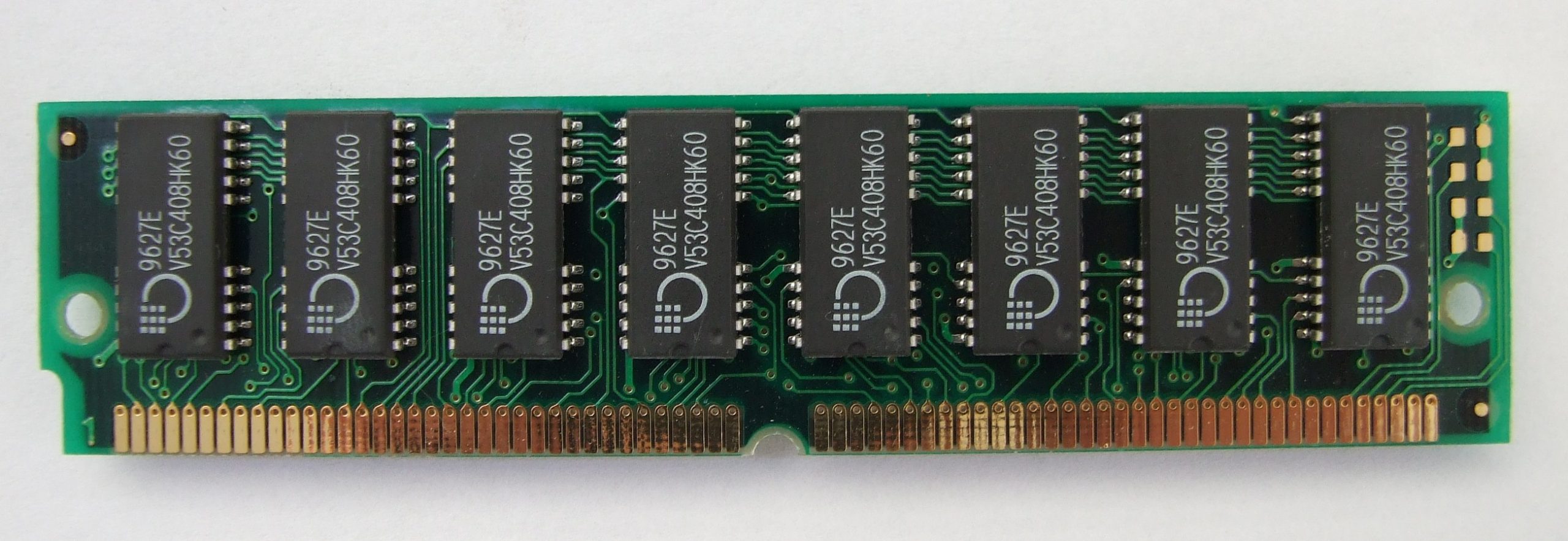Chapter 3: How Computers Do Their Job
Learning Objectives
Welcome to Chapter 3! In this chapter, we will look inside the computer to understand how it works its magic. After studying this chapter, you will be able to:
- Identify the Central Processing Unit (CPU) as the computer’s brain.
- Explain the role of Random Access Memory (RAM) as the computer’s temporary workspace.
- Describe the basic process of how a computer loads and executes instructions.
- Understand the importance of the User Interface (UI) for interacting with a computer.
- Recognise the role of software developers and programming languages.
Introduction
Have you ever tapped on an app icon on your phone and wondered what happens next? How does a simple touch on a piece of glass make a program start? It seems like magic, but it is actually a very fast and organised process happening inside the device.
In this chapter, we will open the “box” and take a simple look at the computer’s most important internal parts. Understanding how these parts work together will help you understand why some computers are faster than others and how your commands are turned into results on the screen.
The Computer’s Brain: The Central Processing Unit (CPU)
The most important component inside a computer is the Central Processing Unit, or CPU. You can think of the CPU as the brain of the computer. Just like your brain does all the thinking and makes all the decisions, the CPU’s job is to carry out the commands and run the programs.
Every time you do something on your computer, from moving the mouse to typing a word, the CPU is processing those instructions. The speed of the CPU is a major factor in how fast your computer feels. A faster CPU can perform more instructions per second, which means your programs will run more smoothly and quickly.
For example, imagine a busy cashier at a supermarket during a holiday sale. A fast, modern CPU in the cash register can calculate prices, apply discounts, and process credit card payments very quickly, keeping the customer line moving. An old, slow CPU would cause delays, leading to frustrated customers. This is why businesses invest in computers with powerful CPUs to improve their efficiency.
The speed of a CPU is measured in Gigahertz (GHz). A CPU with a higher GHz number can perform more calculations per second, making it faster. You might also see terms like dual-core or quad-core CPU. A “core” is like an individual processing unit within the main CPU. A quad-core CPU has four cores, allowing it to work on multiple tasks at the same time, much like a supermarket opening up four checkout counters instead of just one to serve more customers at once.
Check Your Understanding: Q1
Check Your Understanding: Q2
Check Your Understanding: Q3
The Computer’s Workspace: Memory (RAM)
If the CPU is the brain, then Random Access Memory, or RAM, is the computer’s desk or temporary workspace. RAM is a form of computer memory that temporarily holds the data and instructions that the CPU is actively working on.
Think about it this way: when you want to work on a project, you take your books and papers out of your bag (which is like long term storage) and put them on your desk (which is like RAM). Your desk is where the active work happens. A bigger desk allows you to have more books and papers open at the same time, so you can switch between them easily.
Similarly, the more RAM a computer has, the more programs and files it can have open and ready to use at once without slowing down. When you close a program, it gets cleared from the RAM, just like clearing your books off the desk when you are finished.
If you try to have too many programs open and your computer runs out of RAM, it will slow down significantly. This is like having a desk so cluttered with books that to open a new one, you first have to pack another one away into your bag. The constant swapping slows down your work.
Important: RAM is volatile, which means it is temporary. Its contents are erased when the computer is turned off. This is different from a hard drive or SSD (which we will learn about in Chapter 4), where your files are stored permanently.

The Computer’s Filing Cabinet: Permanent Storage
While RAM is the temporary workspace, the computer also needs a place to keep your files and programs permanently. This is the role of permanent storage, which acts like the computer’s filing cabinet or bookshelf. The two most common types of storage today are the Hard Disk Drive (HDD) and the Solid-State Drive (SSD).

Unlike RAM, storage is non-volatile. This means it keeps all your information such as your documents, photos, and installed programs like Microsoft Word, even when the computer is turned off. When you want to use a program, the computer finds it in the filing cabinet (storage) and puts a copy of it on the desk (RAM) for the CPU to work on.

Check Your Understanding: Q4
Check Your Understanding: Q5
Check Your Understanding: Q6
How It All Works: Loading and Executing a Program
So, how do the CPU (the brain) and RAM (the workspace) work together? Let’s look at the simple steps that happen when you click on an app icon, like Microsoft Word.
- Your Command (Input): You use your mouse or finger to click on the Microsoft Word icon. This sends an instruction to the computer.
- Finding the Program: The computer finds the Microsoft Word program file, which is kept in its permanent storage (like a hard drive).
- Loading into RAM: The computer copies the necessary parts of the Word program from storage into the RAM. This is like putting your textbook on your desk to get ready to study.
- Executing by the CPU: The CPU now takes the instructions for the Word program from the RAM, one by one, and executes them. It processes the code that tells the computer to display the Word window, the blank page, and the menu buttons.
- Ready for You (Output): You see the Microsoft Word program open on your screen, ready for you to start typing. As you type, your document is also held in RAM while you work on it.
This entire process happens in a fraction of a second!
Talking to the Computer: The User Interface (UI)
All this work by the CPU and RAM happens inside the box where you cannot see it. So how do we, the users, give commands and see the results? We do this through the User Interface, or UI.
The User Interface is what you see on the screen that allows you to interact with the computer. It is the bridge between you and the internal hardware. Most modern computers use a Graphical User Interface (GUI), which includes:
- Icons and Tiles: These are small pictures that represent programs, files, or actions. You click on the WhatsApp icon to open the app. You click on the trash bin icon to delete a file.
- Windows: The rectangular areas on the screen where programs are displayed.
- Menus: Lists of commands you can choose from, like “File,” “Edit,” and “View.”
A good UI is easy to understand and use. For businesses, having software with a simple and clear UI is very important. It means employees can learn to use the software quickly without needing a lot of training, which saves time and money.

The People Behind the Programs: Developers and Languages
Where do all the complex instructions that the CPU follows actually come from? They do not appear out of thin air. They are carefully crafted by highly skilled people called software developers, who are also known as programmers.
Who Creates Software?
A software developer is a professional who designs, writes, and tests computer programs. Think of them as the architects and builders of the digital world. Every application you use, from the operating system on your computer to the Grab app on your phone, was created by a team of developers. Their job is to solve problems by creating software solutions.
The Tools of the Trade: Programming Languages
To build software, developers need special tools. Their main tool is a programming language. A programming language is a set of words, symbols, and strict grammatical rules used to write instructions that a computer can understand.
You can think of a programming language like a very detailed recipe. If you write a recipe for a friend, you can be a little informal. But when you write instructions for a computer, you must be perfectly precise. The computer will only do exactly what you tell it to do. The instructions written in a programming language are called code.
Why Are There So Many Languages?
You may have heard of popular programming languages like Python, Java, or C++. There are hundreds of different languages because different tasks require different tools.
- Python is very popular today, especially for working with data, artificial intelligence (AI), and for building web applications.
- JavaScript is the main language used to make websites interactive.
- Swift (for Apple) and Kotlin (for Android) are languages used specifically to build the mobile apps on your phone.
A company like Grab, for example, has large teams of developers who use different languages. They use some languages to build the mobile app you use on your phone, other languages to manage the powerful servers that find you a driver, and still others to analyze business data.
The Process of Creating Software
Creating a high quality application is a complex process that involves more than just writing code. It usually follows a series of steps:
- Planning: The developers work with the business to understand the problem they need to solve. What should the app do? Who will use it?
- Designing: They create a blueprint for the application, deciding how it will look, how the user interface will work, and how the different parts will connect.
- Writing the Code: This is the programming stage, where developers write the instructions in a programming language.
- Testing: The program is tested thoroughly to find and fix any errors or “bugs.”
- Deployment and Maintenance: The finished program is released to users. The developers then continue to update and improve it over time.
A Simple Code Example in Python
To help you understand what “writing the code” looks like, here is a very simple program written in Python. This program asks for a user’s name and then prints a personalized welcome message.
The Code:
# 1. Ask the user for their name and store it.
user_name = input(“Please enter your name: “)
# 2. Create a welcome message.
welcome_message = “Welcome to the world of business computing, ” + user_name + “!”
# 3. Print the final message to the screen.
print(welcome_message)
Explanation:
- Line 1: The # symbol means this line is a comment, just a note for humans to read. The input() function displays the message “Please enter your name: ” on the screen and waits for the user to type something. Whatever the user types is stored in a variable called user_name.
- Line 2: This line creates the welcome message. It combines a standard greeting with the name that the user provided.
- Line 3: The print() function takes the message we created and displays it on the screen.
How to Practice: You can try this code yourself without installing any software!
- Go to an online Python compiler like the one at Programiz.
- Copy the code above and paste it into the code editor on the website.
- Click the “Run” button.
- The program will ask for your name. Type it in and press Enter to see the result!
As a business student, you do not need to learn how to write code. But it is very useful to understand that all the software and apps we enjoy every day are the result of this careful and creative process.
Check Your Understanding: Q7
Check Your Understanding: Q8
Check Your Understanding: Q9
Chapter Summary
In this chapter, we looked inside the computer to understand its core operations. We learned that the CPU acts as the computer’s brain, processing all the commands. RAM serves as the temporary workspace for the CPU, holding active programs and data. When you start a program, it is loaded from storage into RAM, and then the CPU executes its instructions. We interact with this process through the User Interface (UI), which includes the icons and windows we see on the screen. Finally, we learned that all software is created by software developers using programming languages.
Review Questions
- In your own words, explain the difference between the CPU and RAM using the brain and desk analogy.
- Why does a computer with more RAM often perform better when you have many applications open?
- What does it mean when we say that RAM is “volatile”? Where are your files saved permanently?
- What is a User Interface (UI)? Name two elements of the UI on your smartphone.
- Briefly describe what a software developer does.
References
Brookshear, J. G., & Brylow, D. (2015). Computer science: An overview (12th ed.). Pearson.
Johnson, J. (2013). Designing with the mind in mind: Simple guide to understanding user interface design rules (2nd ed.). Morgan Kaufmann.
Morley, D., & Parker, C. S. (2017). Understanding computers: Today and tomorrow (16th ed.). Cengage Learning.
Sebesta, R. W. (2015). Concepts of programming languages (11th ed.). Pearson.
Sweigart, A. (2019). Automate the boring stuff with Python (2nd ed.). No Starch Press.
Figure 3.4: A Mobile User Interface. The screen of a smartphone provides a clear example of a modern Graphical User Interface (GUI). The grid of small pictures, or icons, allows the user to launch applications with a simple touch.
(Image generated with AI assistance.)
Temporary storage for data and programs that are currently in use. It is volatile.
To carry out the instructions of a computer program.
The visual part of a program or device that a user interacts with.
A group of people who write computer programs.
A formal language used to write instructions for a computer.

